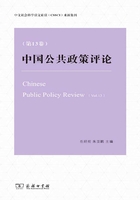
研究述评
公共服务供给的新模式——合作生产研究述评
【摘要】 21世纪以来,合作生产作为公共服务供给的一种新模式在理论与实务界受到广泛关注与推行,学者们对其进行了大量的研究。合作生产是指服务提供者与服务使用者联合提供公共服务的过程,它将服务提供者与服务使用者的资源联合起来提高服务质量。本文梳理了合作生产的概念、类型、影响因素、优势与局限方面的研究文献,回答了合作生产是什么、何以发生、产生的影响等问题。笔者通过文献分析整合出合作生产的分析框架,对我国合作生产的进一步研究有着指导意义。
【关键词】 合作生产 服务提供者 服务使用者 公共服务供给
A Review of the Research on Co-production Research
Abstract As a new mode of public service provision, co-production has attracted wide attention in the communities of both academic and practice since the 21st century, and scholars have done a lot of research on it. Co-production refers to a process in which both service providers and service users provide public services jointly.In doing so, the resources of both service providers and service users are used to improve the quality of services. This paper examines the research literature on the concepts, types, influencing factors, advantages and limitations of co-production, and answers the questions of what the co-production is, why it happens, and what the impacts are. The author develops an analytical framework of the co-production based on literature analysis, which will be helpful for the further studies on on co-production in China.
Key words Co-production, Service Provider, Service Users, Public Service Provision
合作生产(co-production)最早是由奥斯特罗姆(Ostrom,1972)提出的,她在对大城市治理的研究中发现,实践中大警察部门并不能提供较好的公共服务,而一些由社群控制的警察部门则能够为市民提供优质的警察服务,警察服务要有效,警察需要公民积极的合作生产。所以,她总结道,公共服务的生产不同于公共物品的生产,公共服务的生产过程是服务提供者与服务使用者的合作生产过程。但经过20世纪70年代和80年代的研究高潮,合作生产理论随之走向“沉寂”,处于“等待它的生命到来”的状态(李文钊,2017)。合作生产研究中断是因为当时新公共管理改革运动正盛,强调市场化与管理主义,强调处理政府与市场的关系,弱化了政府与社会的关系,忽视了公民作用。随着新公共管理的衰落,新治理运动的兴起,在政府开始借助社会的力量进行改革,公民素质的提高,高质量公共服务需求的增加等背景下,合作生产又迎来了它的第二个春天。正如奥斯本(Osborne,2010)指出的,在21世纪的多元化环境中,由于复杂的组织间关系和多主体决策过程,公共服务的提供需要协商,而合作生产能够领悟公共服务提供中的复杂性。合作生产正是面向21世纪公共服务供给复杂化而生的一种新模式。